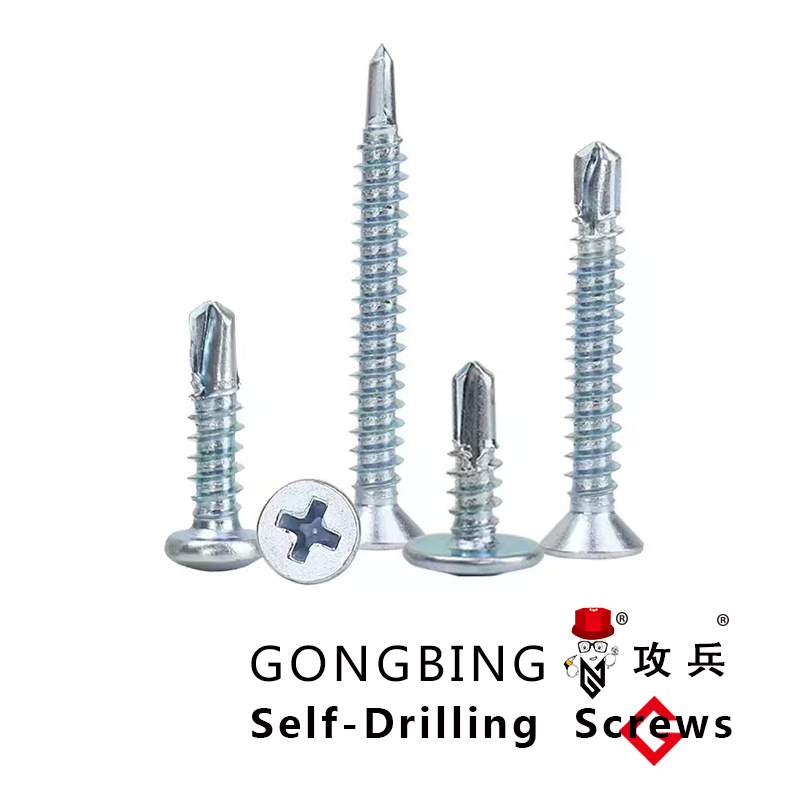Exploring the Benefits and Applications of Countersunk Head Self-Drilling Screws in Construction
Understanding Countersunk Head Self-Drilling Screws Benefits and Applications
In the world of construction and woodworking, fasteners play a crucial role in ensuring structural integrity and durability. Among the myriad of screw types available, countersunk head self-drilling screws stand out for their unique design and functionality. This article will delve into what these screws are, their advantages, and their various applications.
What are Countersunk Head Self-Drilling Screws?
Countersunk head self-drilling screws, often referred to as Tek screws, combine two important features in one fastener a countersunk head and self-drilling capability. The countersunk head enables the screw to sit flush with the surface of the material being fastened, providing a neat appearance while minimizing the risk of snagging. The self-drilling feature means these screws come equipped with a drill point that eliminates the need for a pre-drilled hole, making installation faster and more efficient.
Benefits of Countersunk Head Self-Drilling Screws
1. Time Efficiency One of the primary advantages of using self-drilling screws is the significant time savings they offer during installation. Without the need for pilot holes, workers can install them directly into a variety of materials, including metal and wood, expediting the building process.
2. Flush Finish The countersunk design allows the screw to sit flush with the surface, which is particularly important in applications where aesthetics matter. This feature makes these screws ideal for visible joints, where a smooth finish is desired.
3. Versatility These screws are designed to accommodate a variety of materials, including steel, aluminum, and timber. This versatility makes them a popular choice in both residential and commercial construction projects.
4. Enhanced Holding Power The design of countersunk head screws improves load distribution and holding power. The wider contact area with the material ensures a more secure fastening, which is crucial in maintaining the integrity of the structure over time.
countersunk head self drilling screw

5. Durability and Corrosion Resistance Many countersunk head self-drilling screws come with a coating that enhances corrosion resistance, making them suitable for outdoor applications or in environments where moisture is a concern. Stainless steel variants offer added durability and resistance to rust.
Applications of Countersunk Head Self-Drilling Screws
Countersunk head self-drilling screws find applications in a wide array of fields
- Construction These screws are frequently used in steel framing, roofing, and siding installations due to their ability to penetrate tough materials without the need for drilling.
- Manufacturing In the fabrication of metal products and components, self-drilling screws provide effective fastening solutions that enhance production efficiency.
- Furniture Assembly In the furniture industry, countersunk screws are used to create joints and connections that are both strong and aesthetically pleasing. They ensure that surfaces remain smooth and flush.
- Decking and Fencing For outdoor projects, the corrosion-resistant properties of these screws make them an ideal choice for decks and fences, ensuring longevity despite exposure to the elements.
Conclusion
Countersunk head self-drilling screws are indispensable in modern construction and manufacturing. Their unique combination of features—self-drilling capability, a flush finish, and versatility—make them suitable for a wide range of applications. As industries continue to seek efficiency and durability in their projects, these screws will undoubtedly remain a preferred choice for both professionals and DIY enthusiasts alike. Understanding their benefits and applications allows builders to choose the right fasteners to ensure the success and longevity of their work.
-
Weatherproof Plastic Expansion Anchors for OutdoorNewsJun.06,2025
-
Sustainability in the Supply Chain: Eco-Friendly TEK Screws ProductionNewsJun.06,2025
-
Load-Bearing Capacity of External Insulation FixingsNewsJun.06,2025
-
Double Head Bolts: Enhancing Efficiency in Industrial MachineryNewsJun.06,2025
-
Corrosion Resistance in Chipboard Screws: Coatings for Wholesale DurabilityNewsJun.06,2025
-
Butterfly Toggle Bolts : Enhancing Structural ResilienceNewsJun.06,2025
